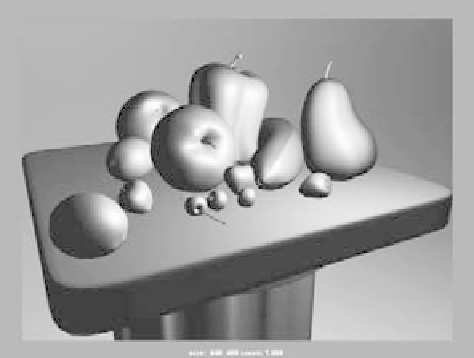Graphics Programs Reference
In-Depth Information
Directional Lights
Directional lights
cast a light in a general direction evenly across the scene (see Figure 10.12).
These lights are perhaps second to Spot lights as the most commonly used light type.
They're perfect for sunlight or general indoor lighting,
for key lights, and for fill and back lights. They give an
accurate sense of direction without having to emanate
from a specific source.
Point Lights
A
Point light
casts light from a single specific point in
space, similar to a bare light bulb. Its light is spread
evenly from the emission point (see Figure 10.13).
Using the Decay Rate drop-down menu in the Attribute
Editor, you can set how a Point light's intensity dimin-
ishes over distance. With No Decay, the Point light illu-
minates an object far away as evenly as it does up close.
This is the most common setting for most applications.
Setting the Decay Rate to Linear, Quadratic, or Cubic requires you to increase the
intensity level exponentially to compensate for the decay. You can use Decay Rate settings
to illuminate nearby objects and to leave distant ones unaffected. In reality, lights have
decay rates. But in CG, they don't really need to decay unless the falloff effect is needed,
as shown in Figure 10.14. Clever lighting can easily avoid this cumbersome calculation.
Point lights are good for effects such as candlelight or setting a mood.
Figure 10.12
Directional light
Figure 10.13
A Point light placed in the front right of frame
Figure 10.14
A Point light with a Decay Rate set



















